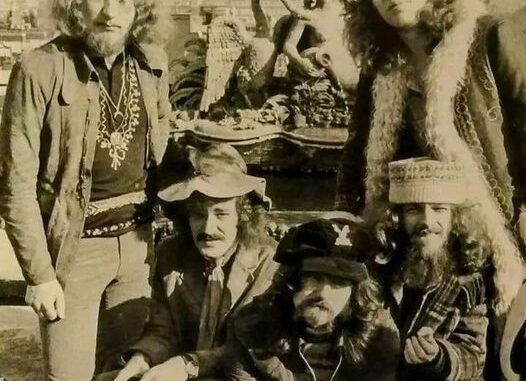
Martin Barre, Clive Bunker, Jeffrey Hammond, Ian Anderson, John Evans
Jethro Tull, a British rock band formed in 1967, is renowned for its unique blend of progressive rock, folk, and blues, distinguished by Ian Anderson’s distinctive flute playing and eclectic songwriting. The band, which saw numerous lineup changes over the decades, is perhaps best known for its classic lineup featuring Ian Anderson, Martin Barre, Clive Bunker, Jeffrey Hammond, and John Evans.
**Ian Anderson** is the heart and soul of Jethro Tull. As the band’s lead vocalist, flutist, and primary songwriter, Anderson’s eccentric stage presence and distinctive voice set Jethro Tull apart from their contemporaries. His proficiency on the flute, coupled with his knack for storytelling and poetic lyrics, became defining characteristics of the band’s sound. Anderson’s ability to blend literary references with personal introspection created a rich, often conceptual tapestry of music that resonated deeply with fans.
**Martin Barre**, who joined the band in 1969, was integral to shaping the band’s sound with his electric guitar work. Barre’s guitar solos and riffs, characterized by their powerful and melodic nature, complemented Anderson’s flute and the band’s overall progressive rock style. His tenure with Tull is marked by his impressive solos in classic tracks like “Aqualung” and “Locomotive Breath.” Barre’s ability to blend rock, blues, and folk elements helped establish the band’s distinctive sound and ensured its evolution over the years.
**Clive Bunker** was the band’s original drummer and contributed significantly to their early sound. His drumming on albums like *This Was* (1968) and *Stand Up* (1969) provided the rhythmic backbone for the band’s early material. Bunker’s drumming style combined precision with a jazzy, improvisational feel, which helped set the tone for Tull’s exploratory sound in their formative years. His departure in 1971 marked the end of an era, but his contributions laid the groundwork for the band’s success.
**Jeffrey Hammond**, known as Jeffrey Hammond-Hammond, was the band’s bassist and occasional lyricist. He joined Jethro Tull in 1971, replacing Glenn Cornick. Hammond’s bass playing was essential in providing the groove and depth to the band’s music during a critical period of transition. His contributions were particularly noted on albums like *Aqualung* and *Thick as a Brick*, where his bass lines provided a solid foundation for the complex musical structures and Anderson’s whimsical, narrative-driven lyrics.
**John Evans** was Jethro Tull’s pianist and keyboardist. His role in the band was crucial in expanding their sound beyond their original blues and folk influences. Evans’ keyboard work added a layer of sophistication to the band’s music, contributing to the progressive rock elements that became a hallmark of Tull’s later work. His playing can be heard prominently on albums like *Aqualung* and *Thick as a Brick*, where his contributions enriched the band’s arrangements and helped elevate their musical complexity.
The chemistry among these five musicians—Anderson, Barre, Bunker, Hammond, and Evans—was pivotal in defining Jethro Tull’s golden era. Their collective efforts produced a series of critically acclaimed albums that continue to influence rock and progressive music. *Aqualung* (1971) is perhaps the pinnacle of their early work, showcasing the band’s ability to blend complex musical ideas with accessible rock and folk elements. The concept album *Thick as a Brick* (1972), a single continuous piece of music split across two vinyl sides, exemplifies their progressive rock ambitions and remains a seminal work in the genre.
Throughout their career, Jethro Tull has undergone various changes in personnel and musical direction, but the impact of the classic lineup cannot be overstated. The interplay between Anderson’s poetic lyrics and innovative flute playing, Barre’s powerful guitar work, Bunker’s inventive drumming, Hammond’s rhythmic bass lines, and Evans’ rich keyboard textures created a sound that was both unique and influential.
The legacy of Jethro Tull, particularly the contributions of this classic lineup, is a testament to their creative synergy and enduring impact on the world of rock music. Their innovative approach to blending different genres and their willingness to push the boundaries of conventional rock have solidified their place in music history.
Leave a Reply